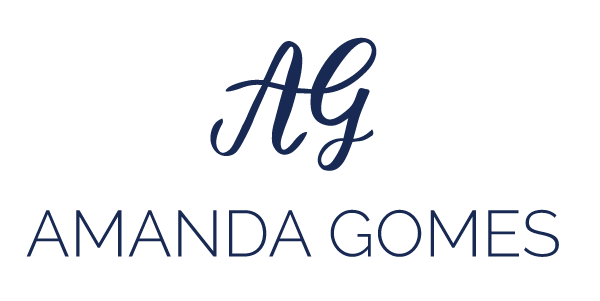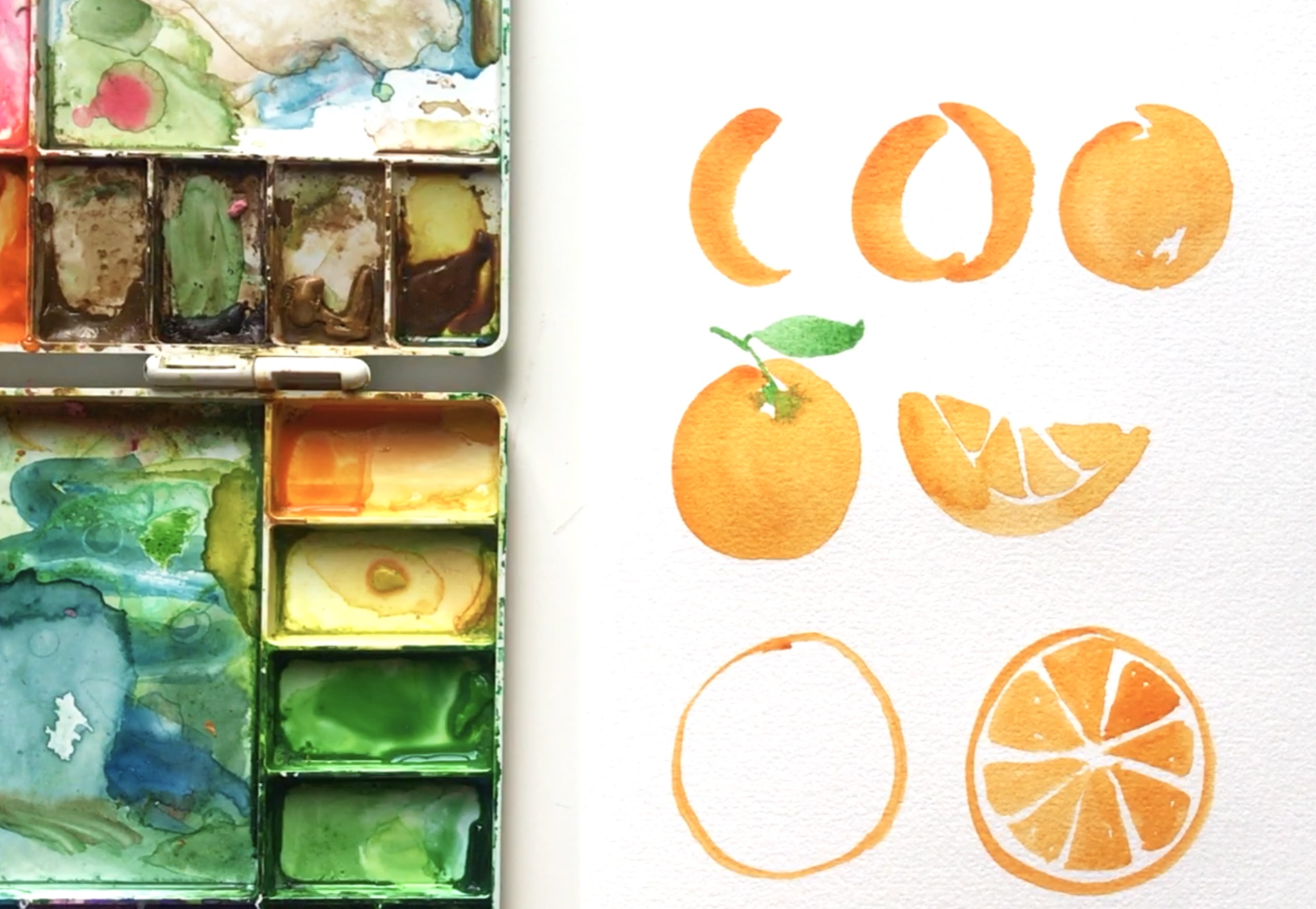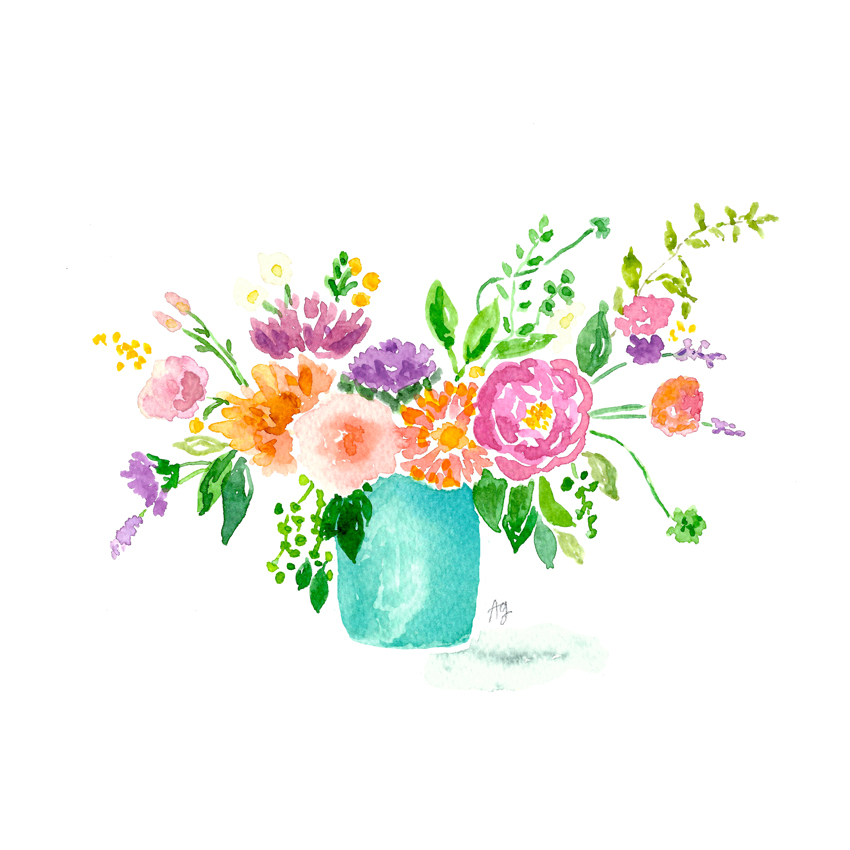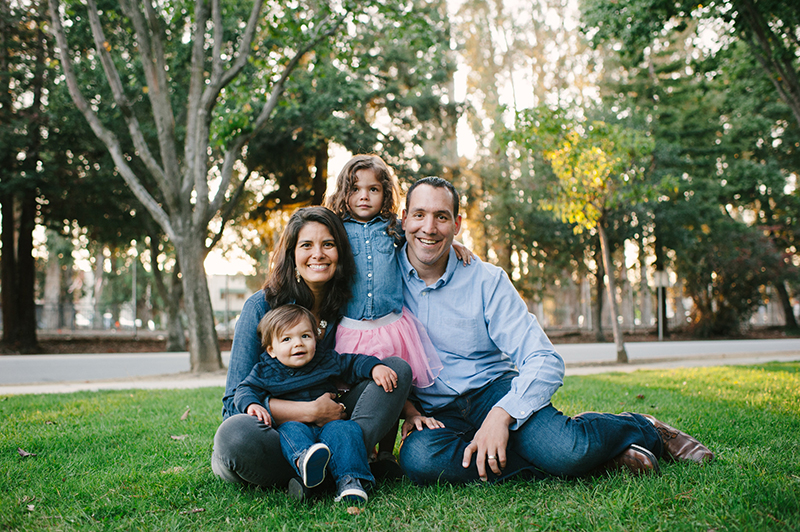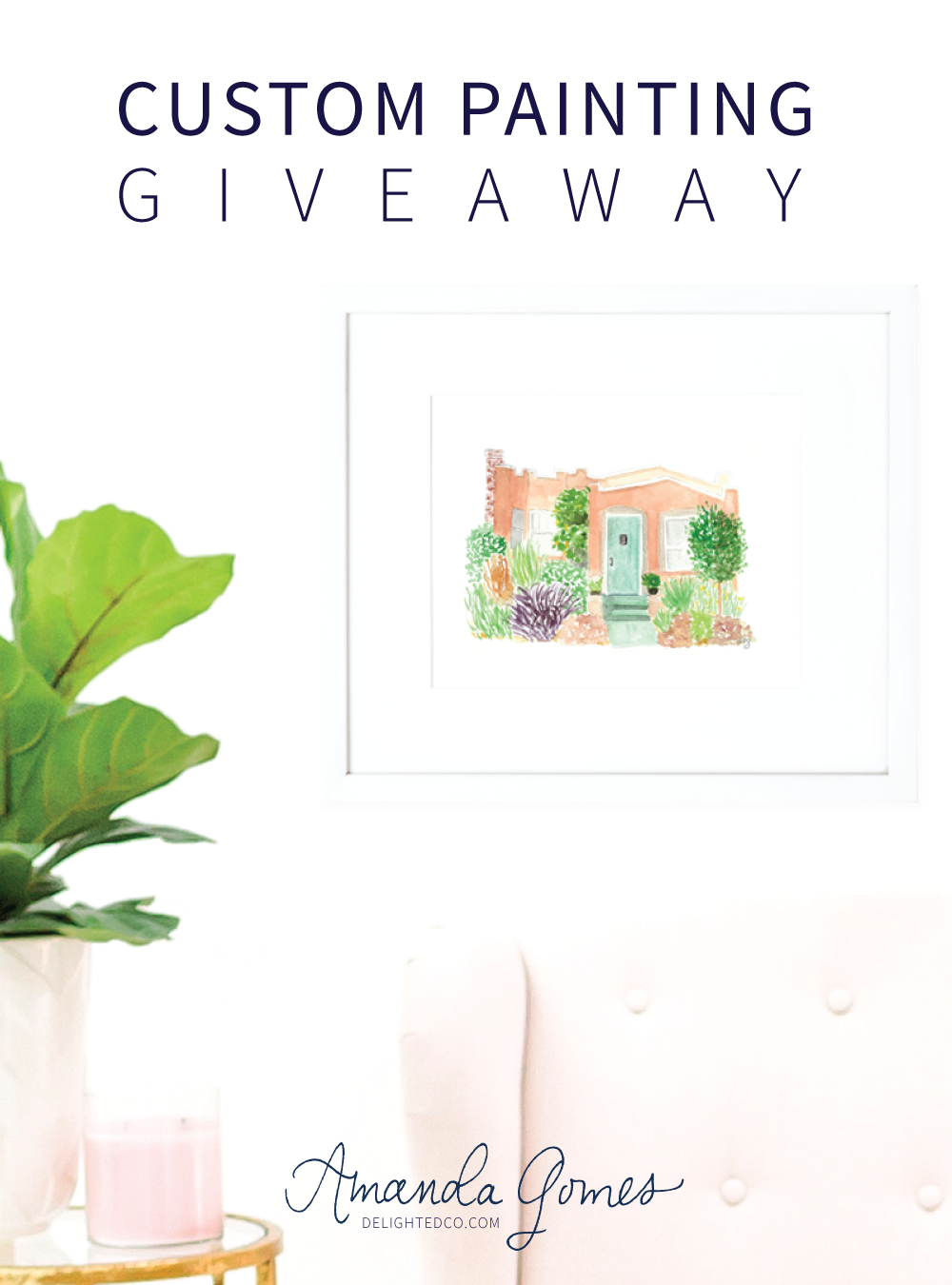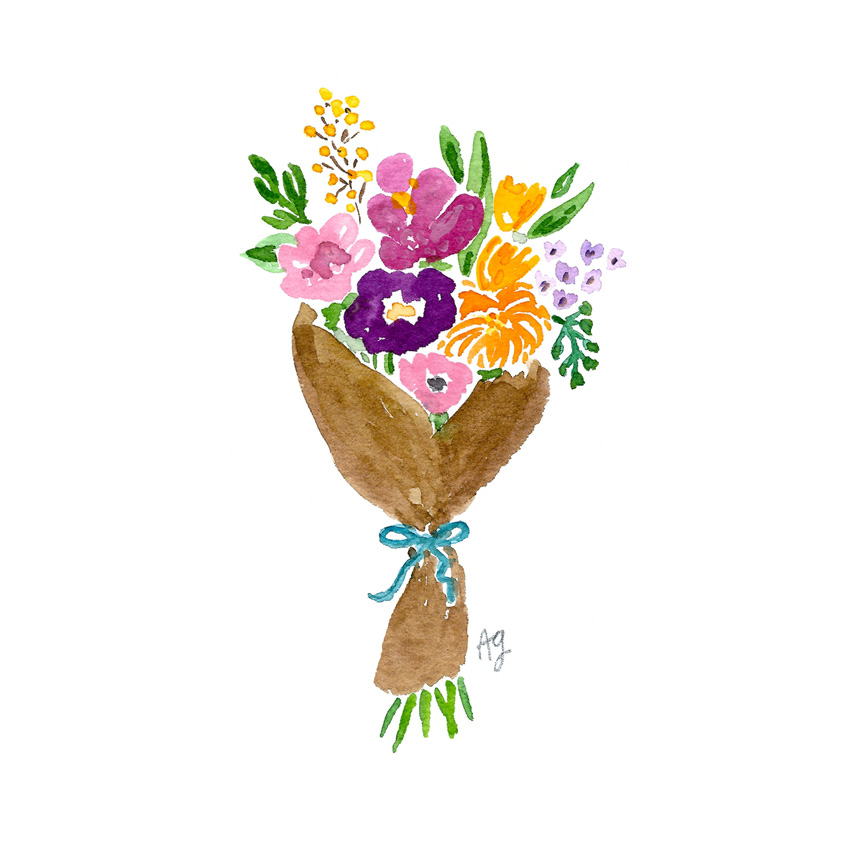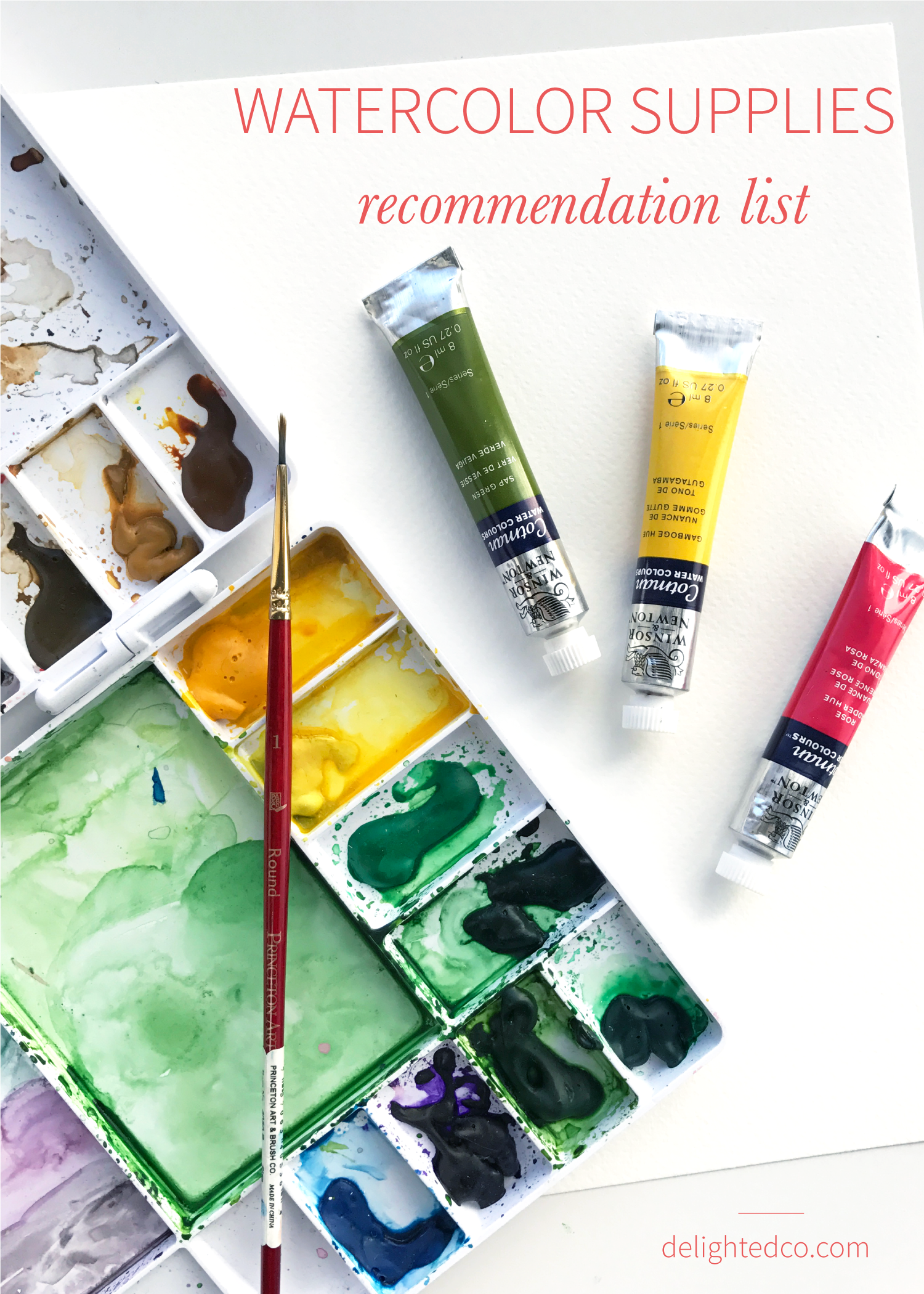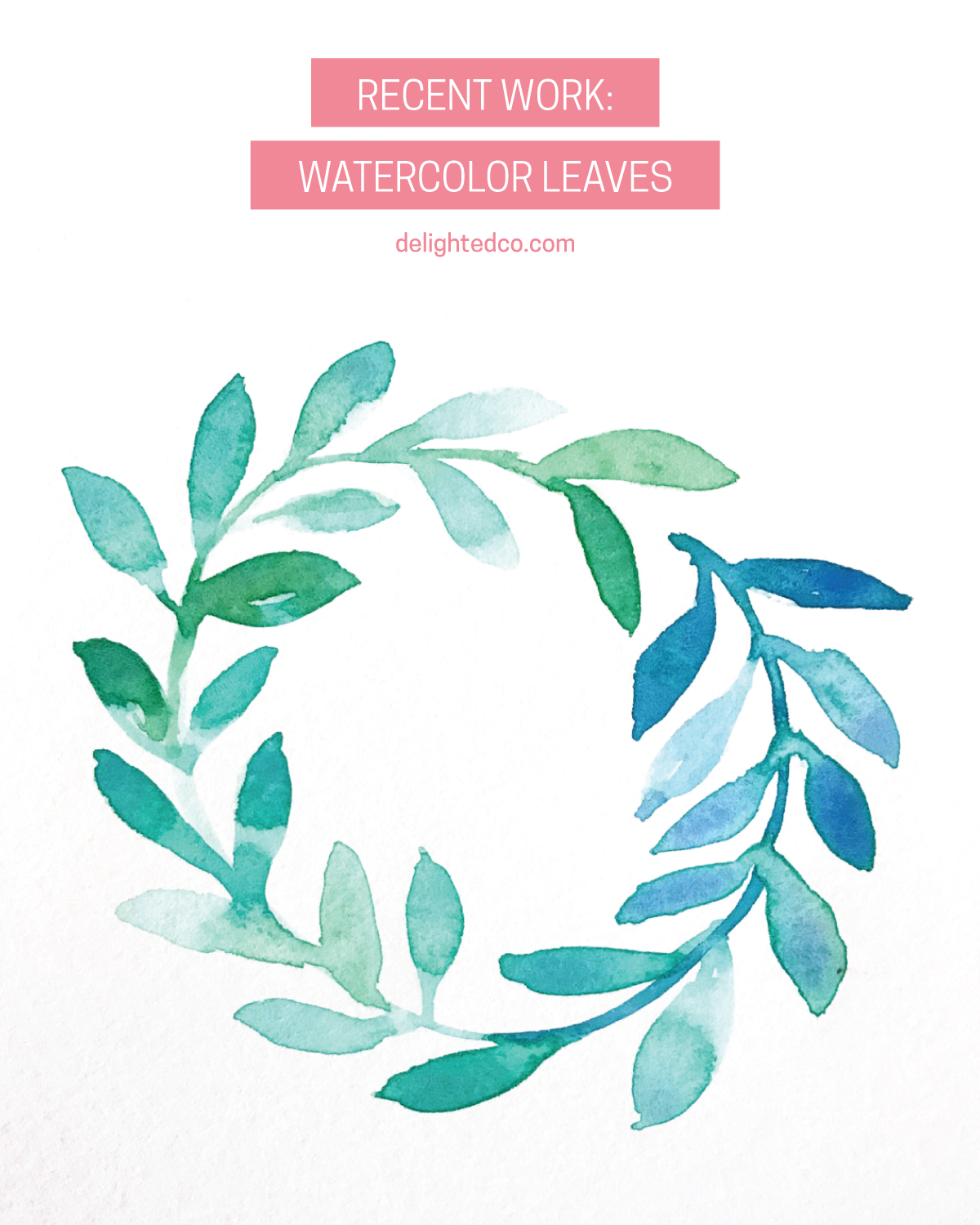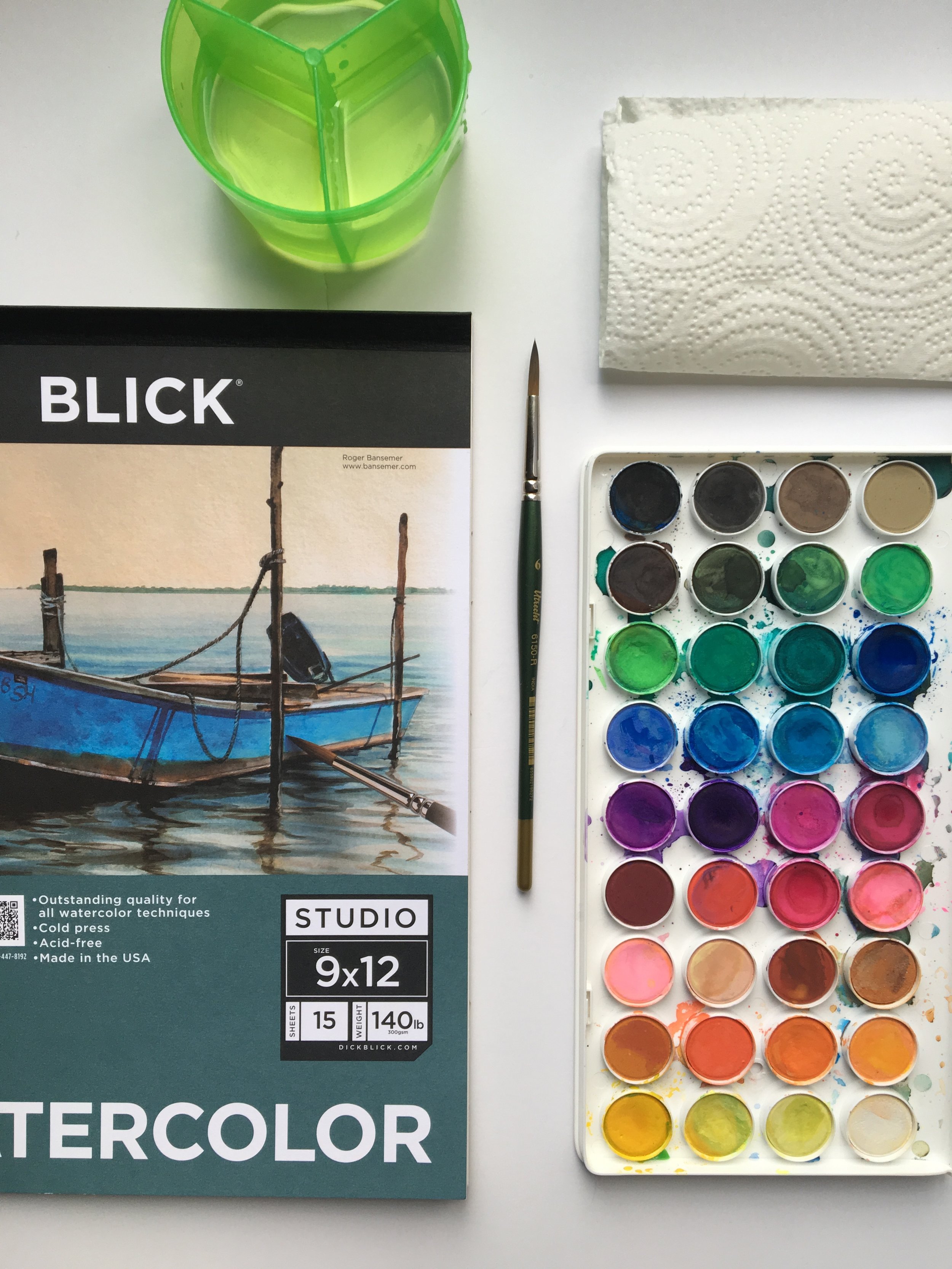Then came time for me to press "play" on Yao's watercolor class. I watched it like a movie the first time through and knew I had to give it a try myself. I had two seriously old brushes, a $5 Michael's watercolor set, and no watercolor paper so I was anxious to get to an art store. I went to Blick and purchased the least expensive watercolor paper I could find, a size 6 paint brush (btw-who knew there was a difference between watercolor paintbrushes and oil paintbrushes!?), one tube of Winsor & Newton Professional Opera Rose paint, (one of Yao's favorite colors), and a 99-cent mixing palette. I was trying to make it as inexpensive as possible because I wasn't sure I would actually enjoy painting as much as I enjoyed watching Yao paint.
But I did! A week later I bought a Winsor & Newton Cotman pan set, a couple more brushes, and the inexpensive SKILL paper from Aaron Brothers and the Canson paper from Michael's. I found myself practicing all.the.time. I would either paint or draw (or both!) every single day for the duration of my sabbatical.
That was almost a year ago and since then, I've spent money on brushes I never use and paper that I don't love. If you're starting out and are wondering what you should buy to get started with watercolor, I'm hoping the recommended supplies listed below will offer some guidance and will make things a bit easier and affordable for you!
PAPER
90 lb Fabriano Studio Watercolor Paper, Cold Press (9x12)
• I use this paper most; it's great for practice
• costs about 30-cents/page
• $6 for 20 pages at Blick
• $15 for 20 pages at Aaron Brothers so wait for their "buy 1, get 2 free sale"
• 25% cotton so it has a great feel but it's more lightweight so the paper will warp a bit, especially if you use lots of water
140 lb Fabriano Studio Watercolor (8x10)
• great for practice and original pieces
• costs about 42-cents/page
• $5 for 12 pages at Blick
• I use this paper when I'm working on something that will be hung on a wall, painting a landscape, or have a particular type of work in mind (vs. just sketching where I use the 90-lb)
BRUSHES
Princeton Heritage Round 4050R
• My favorite!!
• I use sizes 0-10 but my go-to's are 2, 4 and 8
• You can get these at Aaron Brothers (buy 1 get 2 free sales) or Amazon but the best price is definitely at Blick
• $3 - $8 each for those sizes at Blick
Princeton Select Synthetic Round 3750R
• I often use these for lettering (I don't prefer them for anything else)
• Sizes 5/0, 10/0, 0, 1
• Under $2 each for those sizes at Blick
• Note: the brushes on these are super thin and their shape can is easily lost if you snag the wrong way on your paper towel, or drop them, etc.
PAINT
Winsor & Newton Cotman Sketcher's Pocket Book
• Great for beginning and traveling! I used only this set with one tube of Opera Rose for quite a while
• $13 on Amazon
• This set comes with 12 colors, but if you want to start out with more options, they have a 24-color option as well
Winsor & Newton Tubes
• I mostly use Cotman tubes because they're very reasonable, but their colors aren't as vibrant as the professional paint
• $3 each at Blick
• I recommend splurging on Winsor & Newton Professional in Opera Rose (if you like pink)
• My go-to Cotman colors are: Prussian Blue, Permanent Rose, Cadmium Orange, Cadmium Yellow, Lemon Yellow, Hookers Green Light, Sap Green, Raw Umber, Ivory Black
Dr. Ph. Martin's Hydrus Fine Art Watercolor Set 1
• I haven't tried other brands of liquid watercolor or the concentrated versions so I can't compare but these are fun to use
• Bright, bold colors!
• $44 at Amazon or Blick
Artist's Loft Fundamentals Pan Set
• Great for beginning: especially if you're wanting to give watercolor a try and don't know if you'll be able to paint much
• Lots of bright colors
• $5 at Michael's
• This is the only thing I had in my house when I first started (I had purchased it a few years prior) but only used a couple times. I'll admit, I was influenced by the watercolor artists I was learning from and ended up giving this set to my daughter
• Since then, I've seen amazing artists use this set so I'm sure it's about preference and what one is used to. My only hesitation in recommending is that the paints feel a little chalky to me, whereas the Winsor & Newton or Dr. Ph. Martin's don't
And there you have it! I am sure I'll end up trying different paints and paper the longer I watercolor, but for now these are my best recommendations. I hope this is helpful...and have fun painting!
